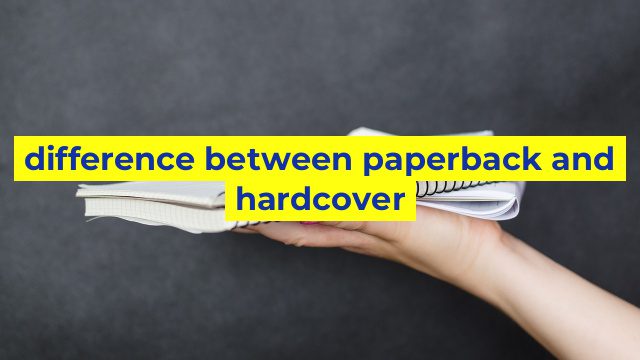The Key Differences Between Paperback and Hardcover Books
When you walk into a bookstore or browse through online bookstores, one of the key decisions you’ll have to make is whether to purchase a paperback or a hardcover book. While both options offer the same story or information, there are differences between the two that may influence your choice.
Cover Design and Quality
One of the most obvious differences between paperback and hardcover books is the cover. Paperbacks are typically made with a glossy or matte finish cover, while hardcovers feature a hard, protective cover wrapped in a dust jacket. The hardcover’s dust jacket provides a sleek and professional look, making them ideal for gift-giving. Additionally, the hardcover’s cover is generally more durable, making it more resistant to bends, scratches, and spills.
Pricing
Another difference between the two is the cost. Generally, paperback books are less expensive than hardcover books. This is due to the difference in production and materials used to make them. Publishing companies typically reserve hardcovers for books they believe will be popular and will sell well. They then release a paperback version of the book once it gains popularity. Paperback books are also lighter and smaller, meaning they require fewer materials and ink to produce.
Portability
One advantage of paperback books is their portability. They are smaller and lightweight, making them easier to carry around in a purse or briefcase. This makes them an excellent choice for commuters or anyone who travels frequently. In contrast, a hardcover book’s larger size and weight make them more suitable for home libraries.
Reading Experience
Lastly, the reading experience is different between the two. Hardcovers generally have more attractive typography and formatting compared to paperbacks. This is because publishing companies usually spend more resources on designing the hardcover book than they do for paperback books. Additionally, the hardcover’s spine can hold up better over a long period, making it easier to read over time without the spine falling apart.
In conclusion, both paperback and hardcover books have their own pros and cons. The choice depends on your personal preference and what you want to get out of your book. Regardless of your choice, a good book will always provide you with the same sense of joy and fulfillment as ever.
Table difference between paperback and hardcover
| Feature | Paperback | Hardcover |
|---|---|---|
| Cost | Lower cost than hardcover | Higher cost than paperback |
| Material | Flexible paper cover | Rigid hardboard cover |
| Weight | Lighter than hardcover | Heavier than paperback |
| Durability | Less durable than hardcover | More durable than paperback |
| Availability | Usually available earlier than hardcover | Released after paperback |
